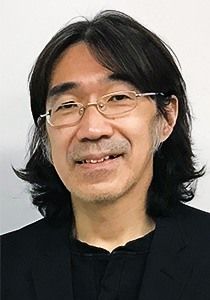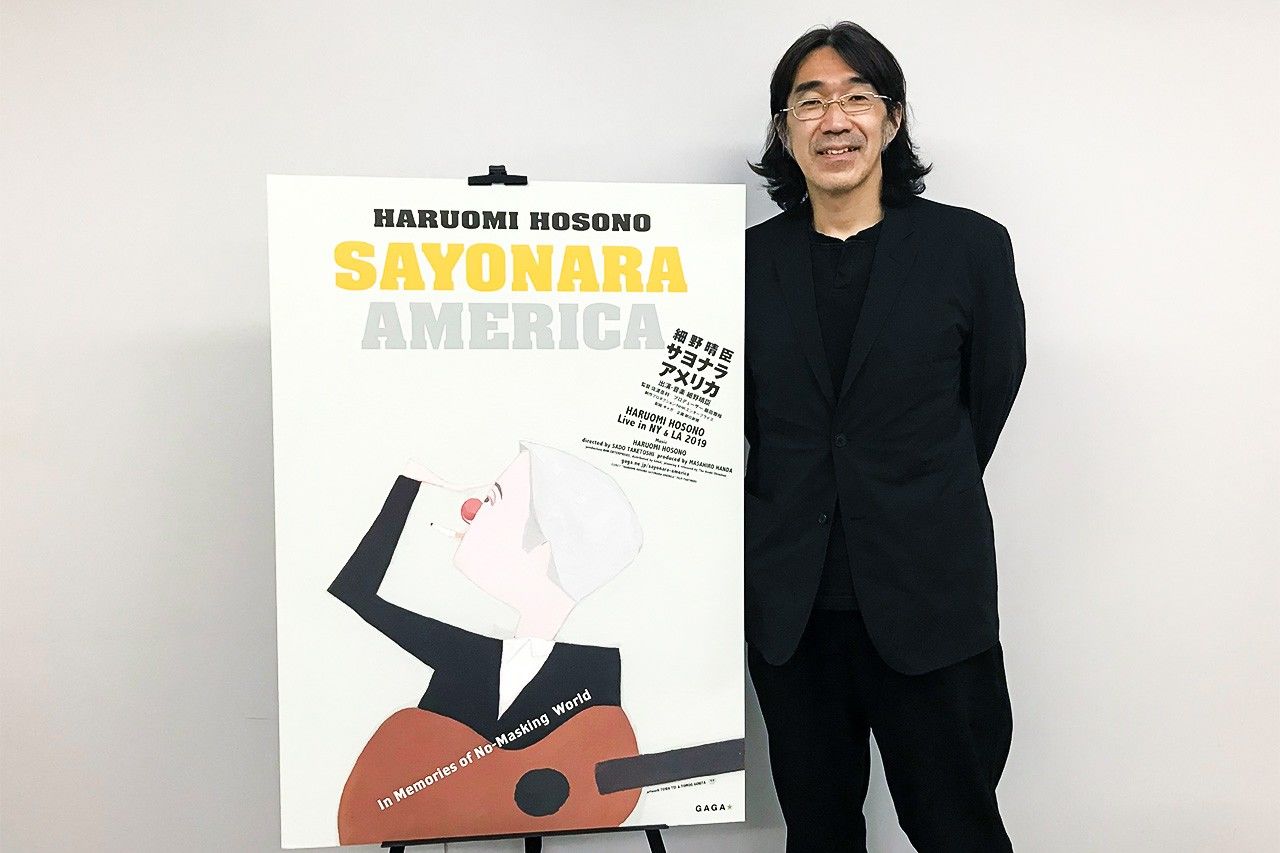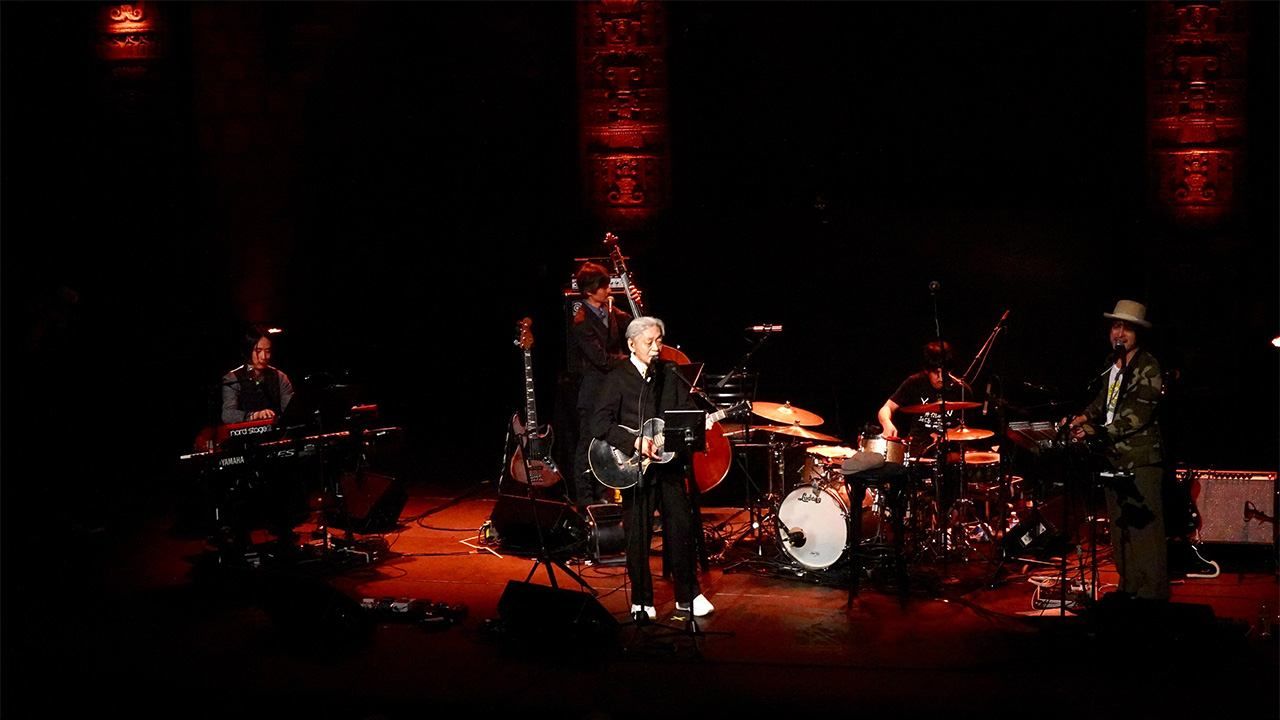
“Sayonara America”: New Film Shows Music Legend Hosono Haruomi Getting Back to His Roots
Entertainment Cinema- English
- 日本語
- 简体字
- 繁體字
- Français
- Español
- العربية
- Русский
Hosono Haruomi made his debut in 1969 with the rock group April Fool. A few years later, his band Happy End had an enormous impact on the Japanese music scene, an influence that continues to be felt this day, transcending eras and national borders. The same is true of the music Hosono produced in the years that followed, both as a solo artist and with Yellow Magic Orchestra and other groups. For decades, Hosono has continued to be at the forefront of Japanese music, both as an artist and as a hitmaker who has provided material for Matsuda Seiko and other idols of Japanese pop music.
A Return to American Music
In 2019, the documentary film No Smoking was made to mark 50 years in the music business. The film brings together footage from throughout Hosono’s career and features him looking back in his own words on his life and work to date, from his childhood through his wide-ranging activities in music over the past half-century.
The film brought the story right up to date, closing with scenes from a series of American dates that Hosono played from late May to early June the same year. Now, Sayonara America has been released as a sequel to that earlier film, this time built around footage from that 2019 American tour. The film features 17 musical performances by Hosono and his band, drawn from the sets he played at three concerts in New York and Los Angeles.
As with No Smoking, the new film is directed by Sado Taketoshi, a director who has collaborated with Hosono for many years.
“No Smoking was made to coincide with Hosono’s fifty years in music, so we had to look back over the whole of his career. That meant we weren’t able to include much live footage. But the American shows were so good that there was always the idea of doing something with the footage at some stage. There was definitely talk among his team about turning it into a film that could stand as a visual record of those dates.”
For most people, Hosono’s name probably still conjures up images of his time with YMO. But the performances in the United States showed a quite different side of the musician. Born in 1947, he grew up with the old American boogie-woogie and other American oldies that his mother would play when he was a child, as Hosono himself remembers in No Smoking. He inherited his mother’s love of the music, and in later years came to see these records from a previous generation as a vital part of his own musical roots.
On the 2019 American dates, covers of songs from the golden era of American popular music made up nearly half the material performed. The rest of the shows featured his own songs from the 1970s and 1980s—but these too were re-arranged in the style of the old boogie-woogie classics he remembered from his childhood in the 1950s. In this, the shows followed the general approach that has marked Hosono’s live performances over the past decade or so, with himself on lead vocals.
“When he started playing boogie-woogie, the response I heard from people was very positive. People seemed to feel that this kind of material was well suited to him at this stage in his career. I must admit, I had my doubts about how it would go over in a live setting. But when I attended the concerts, it was clear that everyone was really enjoying the music. Normally, people go to a concert expecting the artist to play their hits. If the artist decides to fill the set with songs that no one knows, the reception can be a bit frosty. And here was Hosono deliberately building his whole set around this kind of material. But the performances were so good that he had the audiences onside right away. He’s able to play a set of unfamiliar material and still send audiences home happy—that’s the sign of a true performer, I guess.”
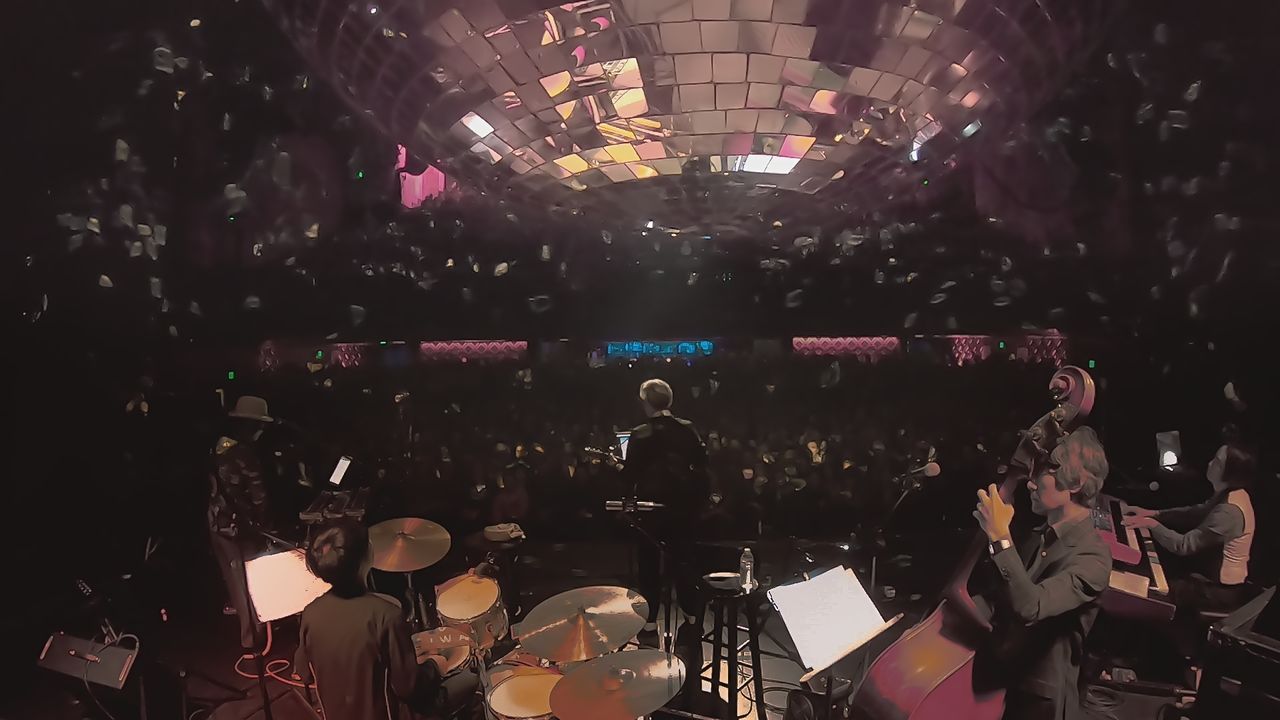
(© 2021 “Haruomi Hosono Sayonara America” Film Partners)
Old American Songs, New American Fans
This was true even when Hosono performed his show in front of audiences in the music’s homeland. The film contains talking-head clips of audience members responding enthusiastically to the shows. As one young fan excitedly exclaims: “This might be the most intense feeling of ‘America’ I’ve ever had in my life.”
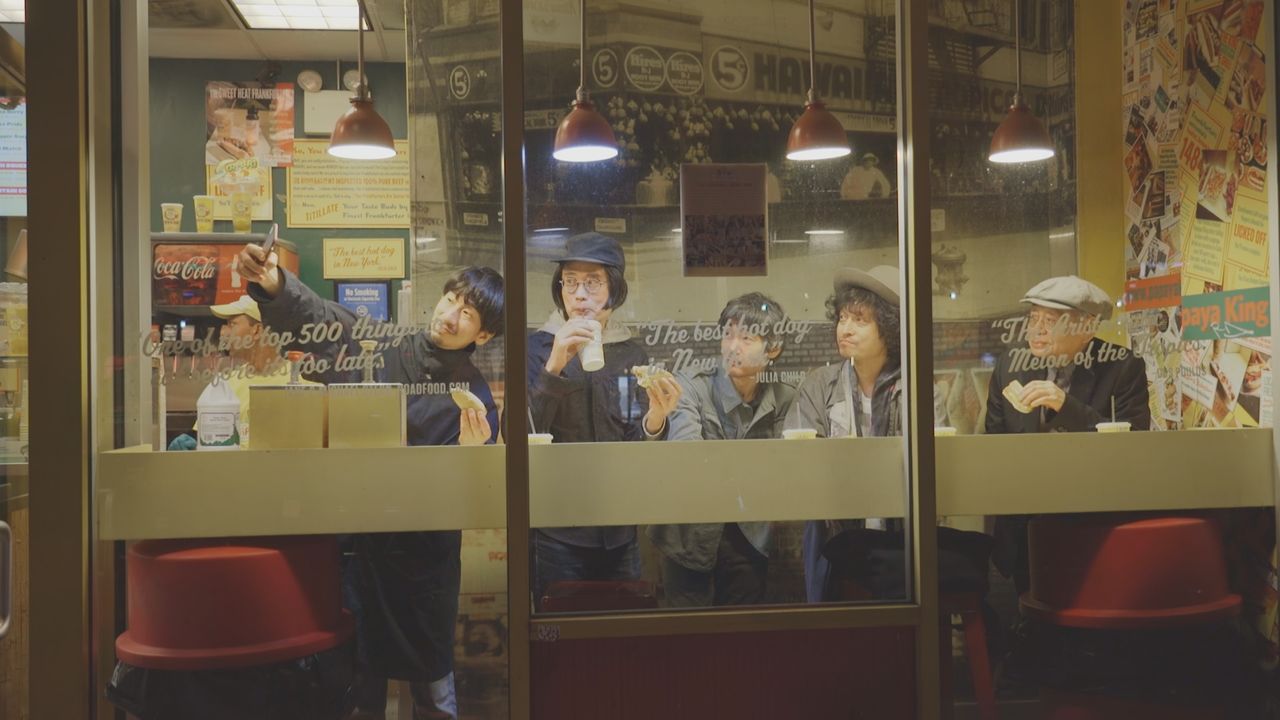
(© 2021 “Haruomi Hosono Sayonara America” Film Partners)
“I think the response went beyond his expectations, to be honest,” Sado says. “I remember commenting to him after one of the shows about how the audience really seemed to get into the music, and he turned to me and said: “Yeah, I’m kind of amazed by it too!” The audiences were an interesting mix. Some were older fans who’d followed Hosono through the various stages of his career—but they were easily outnumbered by young people. Young people today think nothing of hunting down different types of music online. They come to the music fresh, without any preconceived ideas. The performances were faithful to the roots and qualities of these older styles of American music, and I think that resonated with the younger audiences too.”
Hosono’s best-known work remains the synth-driven music he made with YMO in the 1970s and 1980s—and that is true in in the United States as in Japan. Sado says many fans brought copies of their old albums to the concerts hoping to get them signed.
“A lot of the people I spoke to first discovered the music through YMO or Happy End, and had gone on to explore the rest of Hosono’s career from there. That was the most common pattern. A few years ago, the Happy End song “Kaze o atsumete” featured in Sofia Coppola’s film Lost in Translation. For a while, open-minded listeners around the world were driven to check out the music on the back of that, but nowadays pretty much everyone comes across it on YouTube. Another factor is the city pop style of Japanese music from the 1980s, which is enjoying a resurgence of interest among young people overseas right now. And that leads back to Hosono too if you trace the roots of the music back far enough.”
Sado often travels overseas to meet people in the music industry, and says when the conversation turns to Japanese musicians, it is almost inevitably Hosono’s name that comes up.
“So I knew that he was well-known among people in the industry, but I rarely had a chance to talk with ordinary music fans until this last tour. I was impressed by how widely he’s known, how he’s really become part of the culture over there. There was a definite sense that people really knew the music. In many cases, I felt perhaps they were listening on a much deeper level than average music fans in Japan, really appreciating the unique qualities of the music.”
Goodbye to All What?
Hosono marked his half-century in the business with a string of celebratory events—the American tour, a special exhibition (Hosono Kankō 1969–2019) and the release of the No Smoking film in theaters. The mood of celebration had barely died away as 2019 came an end . . . then came 2020, and the pandemic that turned the musical world upside down.
“He had a bunch of overseas dates already booked for 2020. I was set to travel with the crew and film the shows again, but of course all that had to be canceled.”
Part of the reason why progress on the live film project moved so quickly may have been that it was being put together at a time when performances in front of live audiences seemed to have become a thing of the past. Sado had just finished the first rough edits when Hosono visited the editing room.
“I asked him what we should do about the title ‘Actually,’ he said, ‘there’s one idea I’ve been thinking about.’ Sayonara America. I agreed it was perfect, and so that was pretty much settled right there and then.”
The idea came from “Sayonara America, Sayonara Nippon,” a track on the album Happy End, released in 1973 after the break-up of the band. The track was written with American musician Van Dyke Parks, best known for his collaborations with Brian Wilson and the Beach Boys, who happened to drop by the classic Sunset Sound Recorders studio in Hollywood during the sessions.
Both No Smoking and this sequel feature footage of Hosono returning to Sunset Sound for the first time in almost half a century and renewing his old friendship with Van Dyke Parks. Fifty years in the life of the artist flash by like scenes on a magic lantern, and then: “Sayonara.” Does the title represent a summing up, a fond farewell—That’s all folks?
“Originally I think it was intended more to mark the end of a phase in his career: that this phase of playing boogie-woogie and other styles of old American music was at an end. Hosono-san has engaged with all kinds of different genres since his days in Happy End. He’s always looking for something new. He tends to do throw himself into something for three years or so and then suddenly he’ll veer off in another direction. Actually, this phase was relatively long—maybe because it was partly about him going back to his own musical roots. I think the experience of playing this music for the first time in the places where it came from, and performing it before American audiences, I think that added to the sense of this as marking the culmination of a certain phase, if you like.”
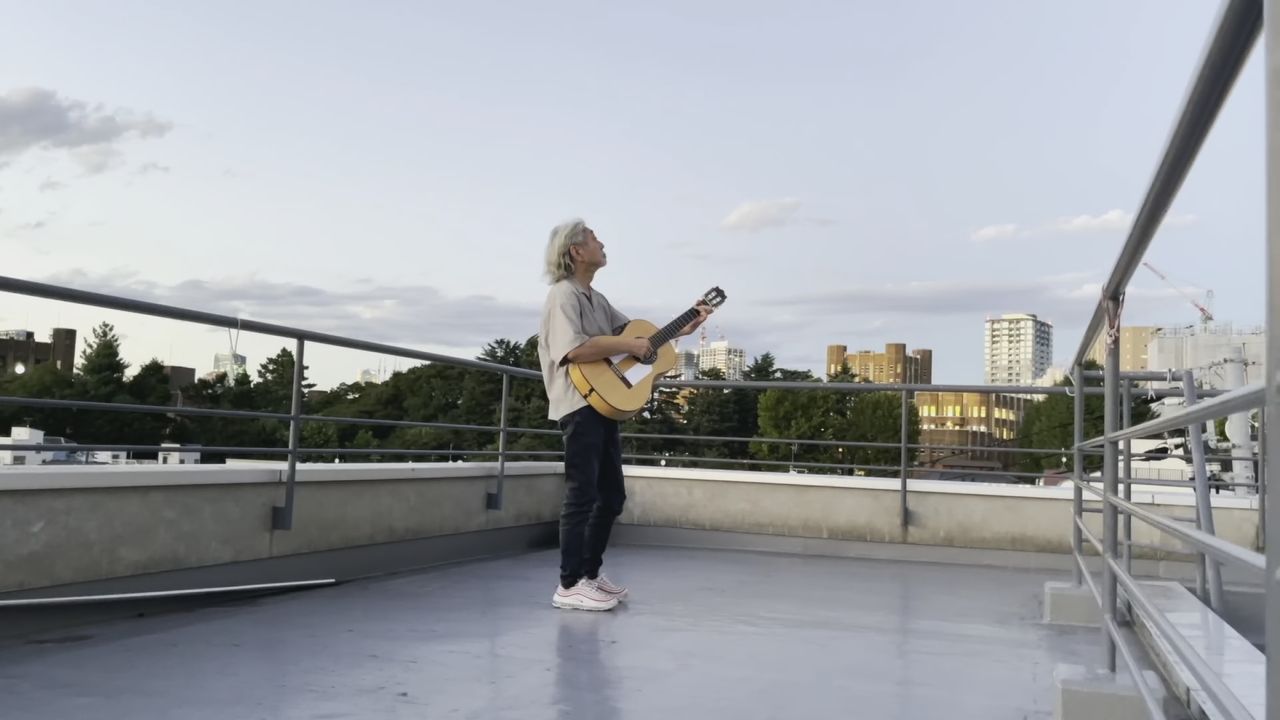
(© 2021”Haruomi Hosono Sayonara America” Film Partners)
At the same time, looking back on these American performances from a world utterly transformed by the pandemic must have felt like waving goodbye to a rapidly retreating vision of a vanished time.
In a scene at the beginning of the new film Hosono, his hair grown long since the start of the pandemic, appears on the roof of his recording studio with a guitar in hand for the first time in two years and embarks on a kind of monologue.
“We knew we wanted to include some kind of comment from Hosono, and had approached him saying we wanted to shoot something along those lines. In the end, he filmed it for us himself. So the pandemic not only gave the film its title: it also had an influence on the form of the film itself.”
One memorable moment comes toward the end of the film, during a performance of the song “Body Snatchers,” which Sado chooses to accompany with footage from Don Siegel’s 1956 sci-fi horror classic Invasion of the Body Snatchers.
“It was an idea that came up when I was talking with Hosono. That connection with American culture is one of the subjects of Sayonara America, and that movie was a direct inspiration for the song. It’s the story of a town that is invaded by strange, alien lifeforms from outer space, who possess and take over people’s bodies—so you can see parallels with the situation with the coronavirus.”
It’s a reminder of the words that Hosono speaks almost in a whisper at the start of the film: “It frightens me to see freedoms being curtailed, totalitarianism on the rise. The virus is bad enough, but human beings can be pretty scary too.” Hosono must have thought carefully about the message he wanted to convey by releasing Sayonara America into a world still in the grip of the pandemic. As the director, Sado has come up with a film that brings that message across powerfully to audiences.
“Restrictions have been placed on music and other forms of entertainment. The ways people enjoy themselves have changed. I think everyone who goes to see the film will get a visceral reminder of how special the shared experience of live music can be. Entertainment and the arts are an essential part of a rich, rounded life. But everyone has their own ideas about how they want to live, what they want from leisure and entertainment. The film documents a series of remarkable, exciting shows that Hosono played in front of American audiences. And then the shows finish and an era comes to an end. So, what comes next? In a way, I think that’s what the film is about. Hosono is asking himself: ‘What will I do next?’ And he’s asking the same question of the audience: ‘What about you? What are you going to do next?’”
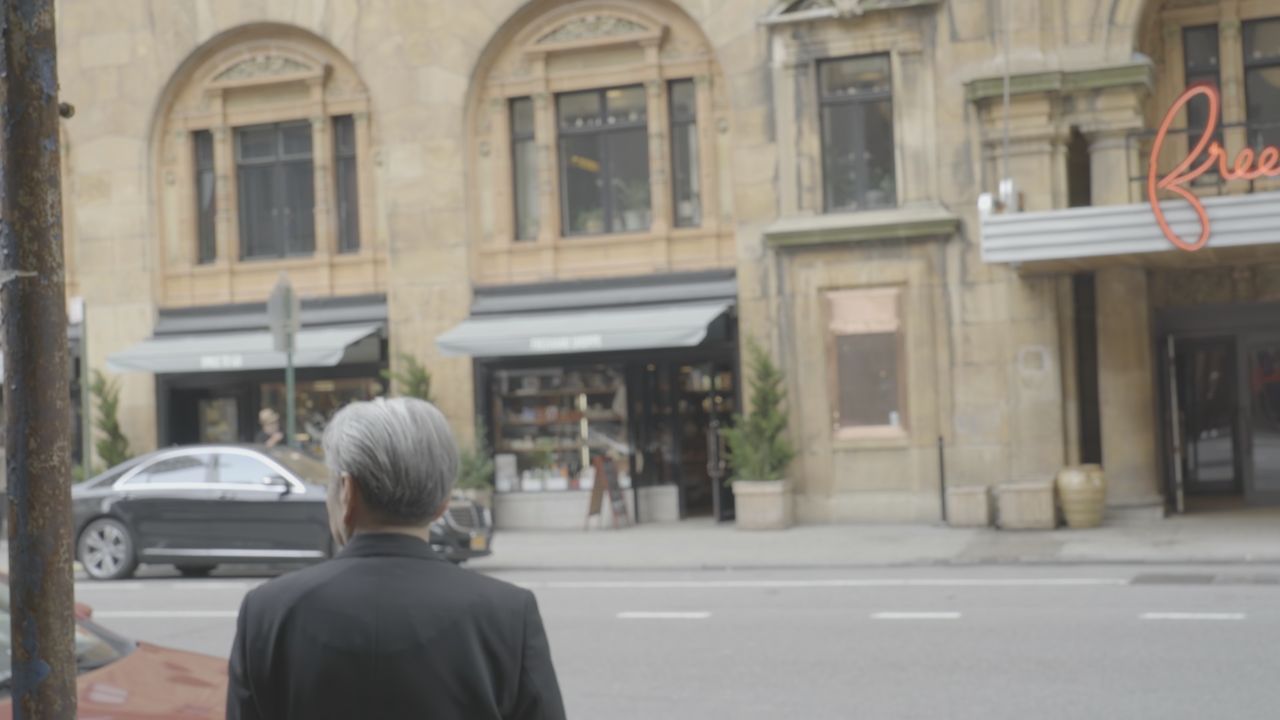
(© 2021“Haruomi Hosono Sayonara America” Film Partners)
(Originally published in Japanese. Interview and text by Matsumoto Tatsuya of Nippon.com. Banner photo: Hosono Haruomi on stage in the United States. © 2021 “Haruomi Hosono Sayonara America” Film Partners.)
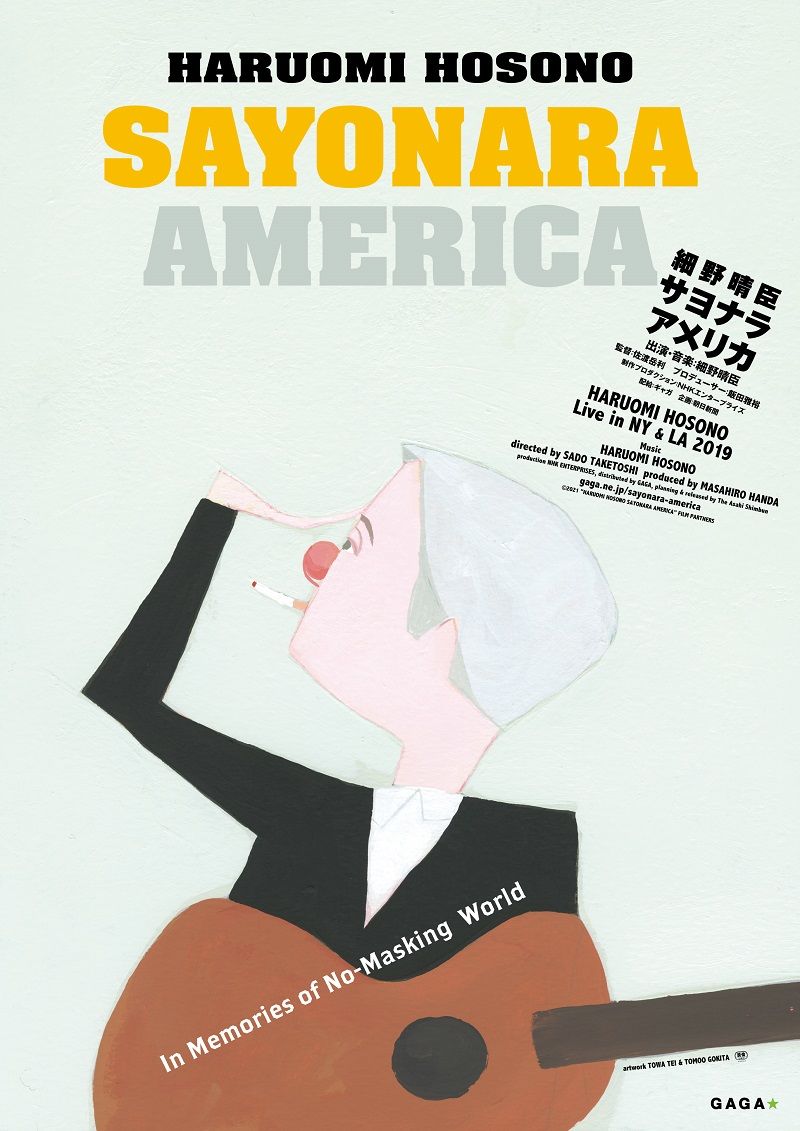
(© 2021 “Haruomi Hosono Sayonara America” Film Partners. Artwork by Towa Tei & Tomoo Gokita.)
Sayonara America
- Music by Hosono Haruomi
- Directed by Sado Taketoshi
- Produced by Iida Masahiro
- Running time: 83 minutes
- Official site (Japanese): gaga.ne.jp/sayonara-america
